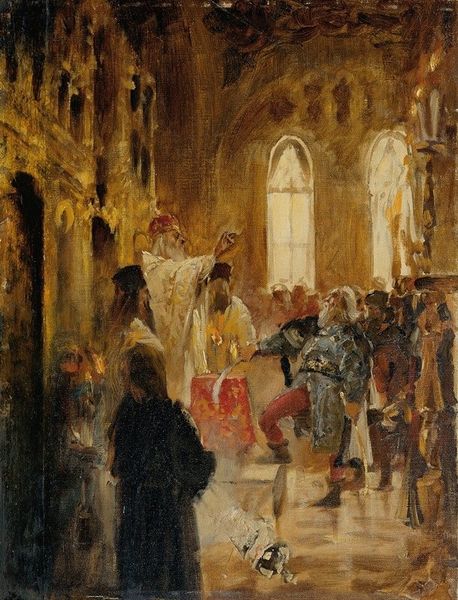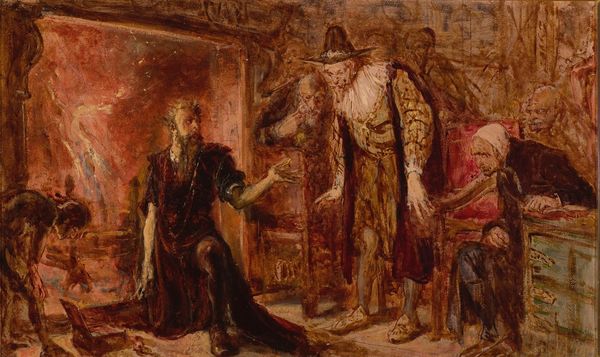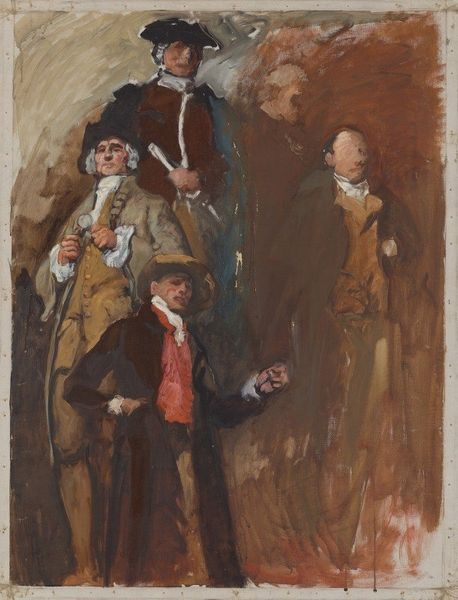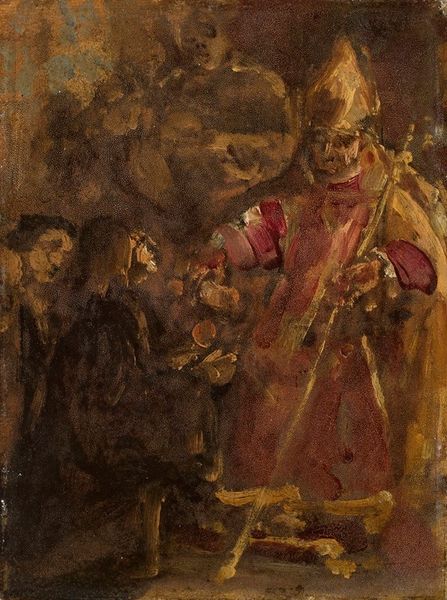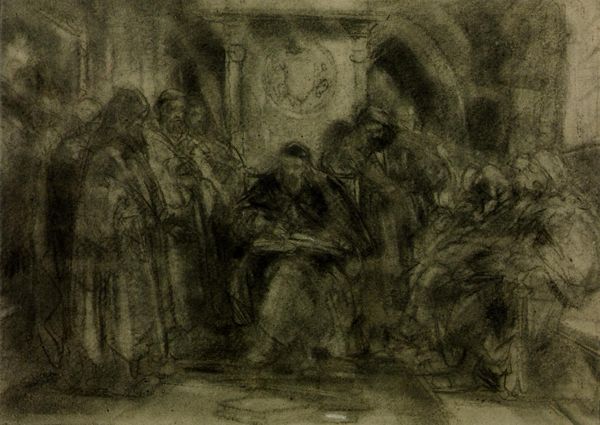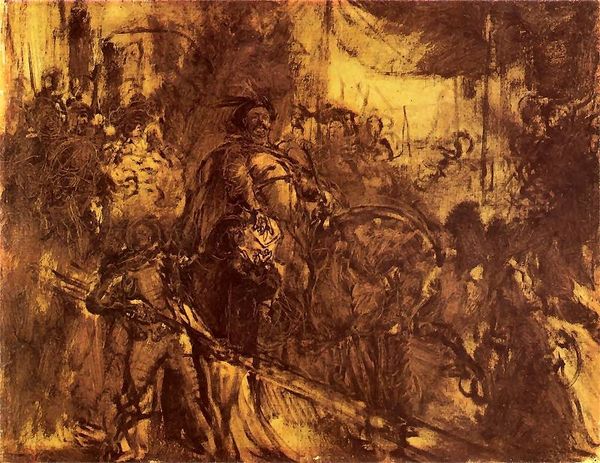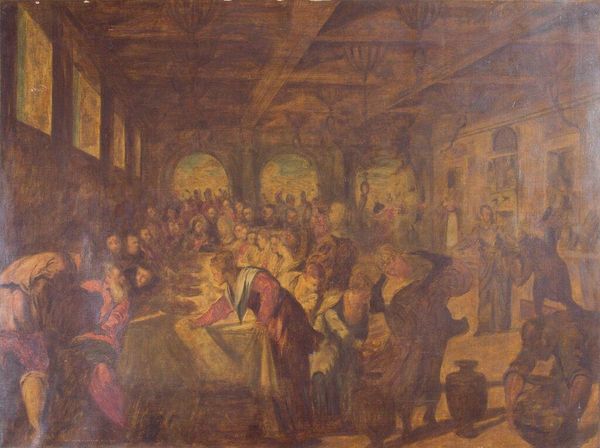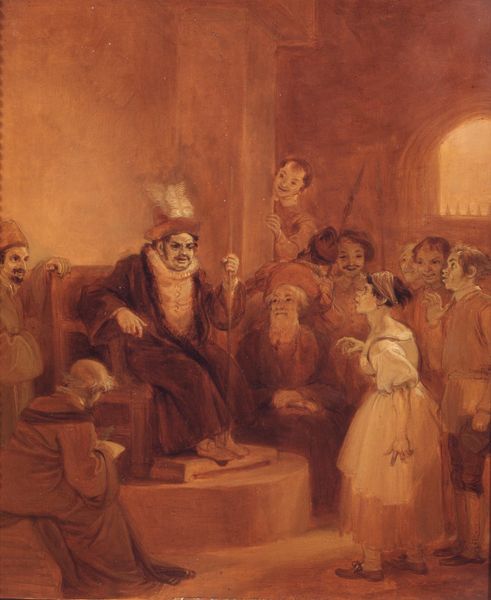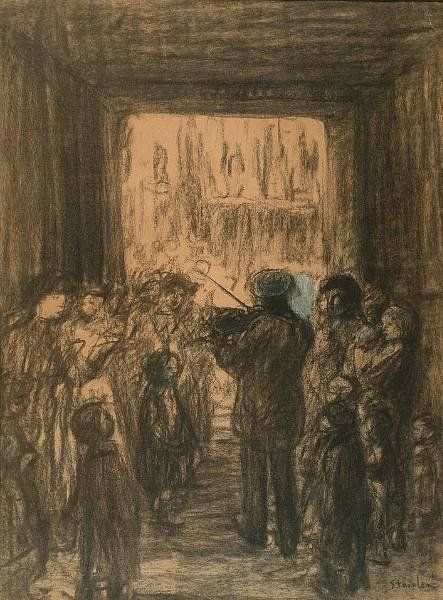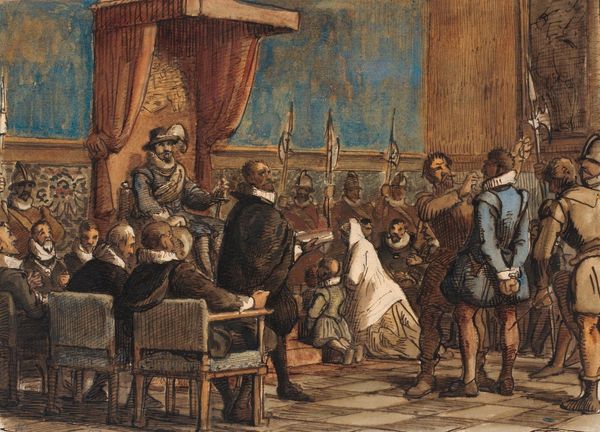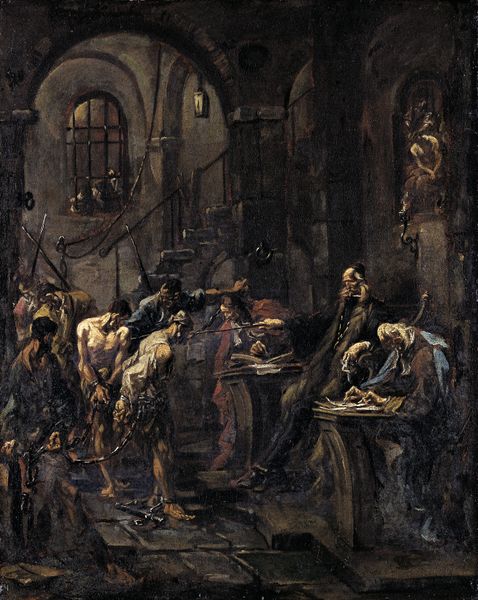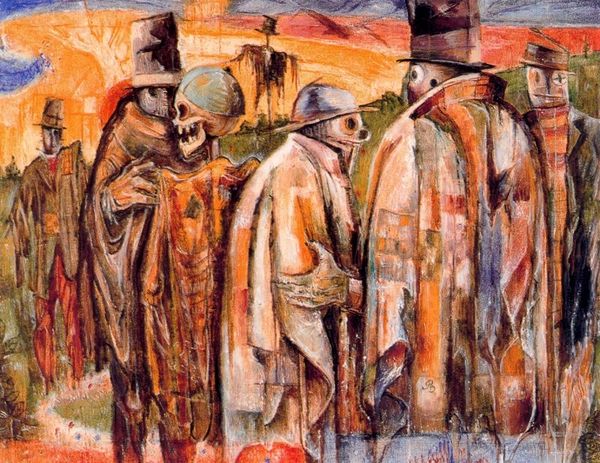
Copyright: Public domain
Nikolai Ge painted 'Christ in front of Annas' using oil on canvas, a traditional pairing of materials. Looking closely, we can see how Ge uses the viscous quality of oil paint to build up a rich, textured surface, particularly in the figures' robes and the dimly lit interior. The thick application of paint, or impasto, catches the light and adds a sense of drama and immediacy to the scene. Notice how the brushstrokes are loose and expressive, giving the work a sense of raw emotion. The painterly approach is what gives Ge’s painting its social and cultural significance. Unlike the smooth, polished surfaces of academic painting, Ge embraces a more direct, hands-on approach. This aesthetic choice can be interpreted as a rejection of the elitism associated with fine art, aligning the work with more grounded, craft-based traditions. The visible labor involved in its creation invites the viewer to consider not only the subject matter, but also the act of painting itself, and its ties to wider issues of labor, politics, and consumption. Ultimately, the materials and making of a work like this are vital to understanding its full meaning, challenging traditional boundaries between fine art and craft.
Comments
No comments
Be the first to comment and join the conversation on the ultimate creative platform.
